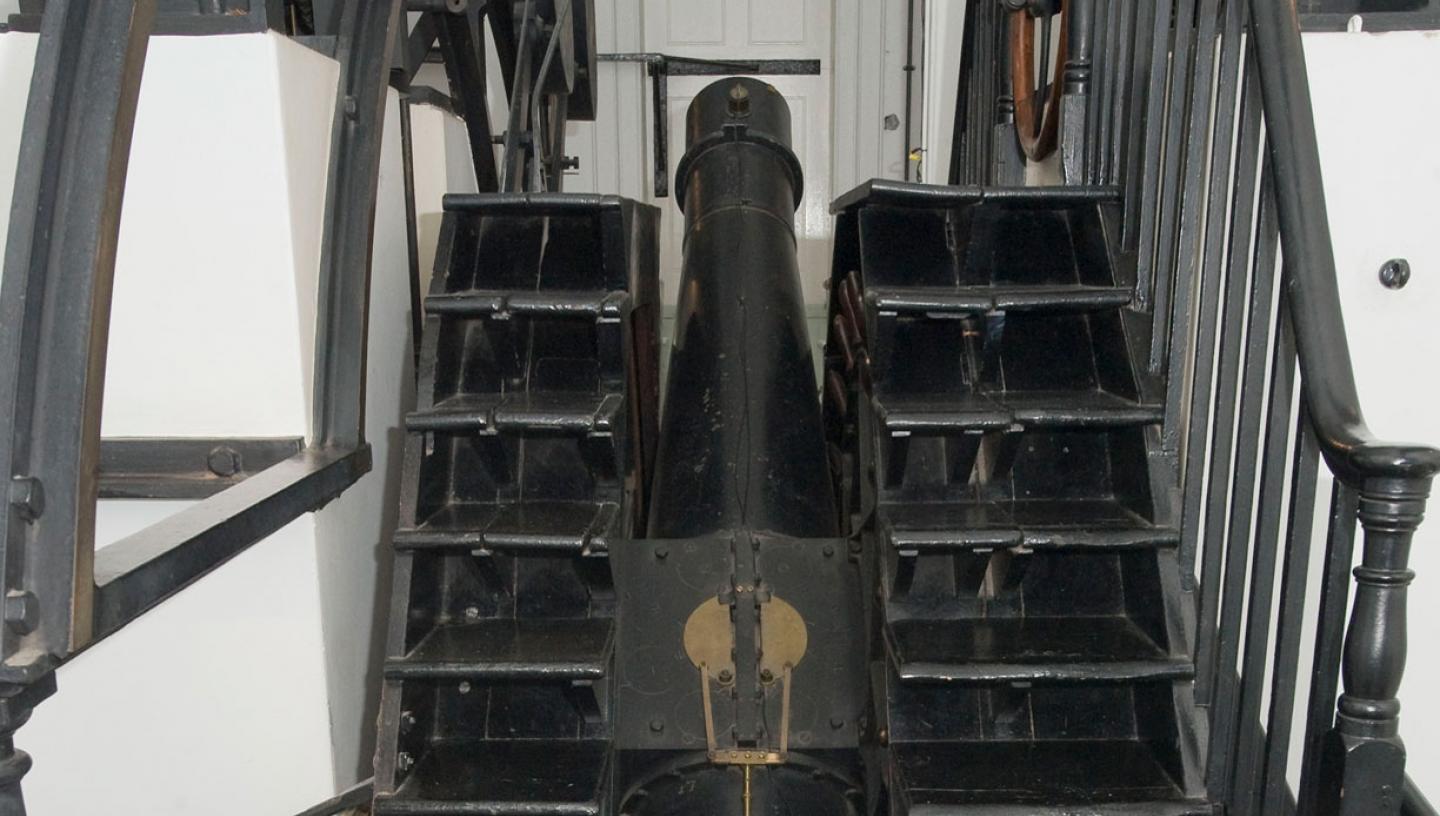
Airy's Transit Circle and the dawn of the Universal Day
The story of Astronomer Royal George Biddell Airy and the remarkable Airy Transit Circle telescope he designed at the Royal Observatory Greenwich.
It is now over 160 years since 'first light' for the Airy Transit Circle – the first observation with the telescope that would define the Prime Meridian of the World.
Transit Circle
The Airy Transit Circle (telescope) was designed by Astronomer Royal George Biddell Airy. The first observation was taken on 4 January 1851, three days later than Airy had intended due to the English weather. The circle remained in continual use until 1938, and the last ever observation was taken in 1954.
The transit circle sits in its original mounting, in the Transit Circle Room. It was immediately recognised by astronomers as an instrument of great accuracy. But its importance for everyone else dates from a conference held in Washington DC in 1884 to create an international time-zone system. It was agreed that the meridian line marked by the cross-hairs in the Airy Transit Circle eyepiece would indicate 0° longitude and the start of the Universal Day.
"The watcher who wishes to observe the passing of a star must note two things: he must know in what direction to point his telescope, and at what time to look for the star. Then, about two minutes before the appointed time, he takes his place at the eyepiece. As he looks in he sees a number of vertical lines across his field of view…On comes the star, 'without haste, without rest,' till it reaches one of the gleaming threads. Tap! The watcher's finger falls sharply on the button. Some three or four seconds later and the star has reached another 'wire,' as the spider-threads are commonly called. Tap!"
E. Walter Maunder, Assistant at the Royal Observatory, 1900.
Making a transit measurement
A transit circle is used to make two measurements - the time at which a star crosses the meridian, as it travels from East to West across the sky, and the angle of the star above the horizon. From these measurements an astronomer can calculate the celestial coordinates of the star - its precise position in the sky, relative to other stars. If the star's coordinates are already known, then the transit of a star across the meridian can be used to set the clocks at an observatory.
To use the Airy Transit Circle, first the roof of the Observatory was opened to allow the telescope to observe the sky. Next, a star was chosen for a measurement, and the telescope was tilted up to the angle of that star in the sky. The observer then waited for the rotation of the Earth to carry the star across the field of view of the eyepiece of the telescope. As the star crossed the meridian, its position was measured using a series of wires (actual threads of spider's web) in the eyepiece of the transit telescope.
The microscopes for measuring the altitude of the Airy Transit Circle
Once a transit observation had been made, the observer measured the angle at which the telescope was tilted by using a system of microscopes to read a high precision scale on the side of the transit circle. This measurement gave the angle of the star above the horizon, which could be converted into its angle above or below the celestial equator, or declination. The Airy Transit Circle could be used to measure the declination of stars to an accuracy of 0.01s of arc.
Greenwich Mean Time
Certain stars, whose positions in the sky were precisely known, were designated as "clock stars". The transit times of these stars could be calculated very precisely from their coordinates, in advance of the actual observations. This allowed astronomers to check the accuracy of the standard clock, and set it to the correct time. In this way, observations of stars with the transit circle were used to set Greenwich Mean Time.